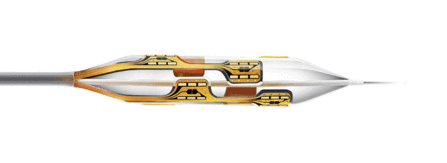
New data presented at the Transcatheter Cardiovascular Therapeutics (TCT) Conference in San Francisco, USA, demonstrate an excellent safety profile for Boston Scientific’s renal denervation system.
An interim analysis of 139 patients enrolled in the REDUCE-HTN post-market study affirms the device safety profile and effective treatment for resistant hypertension.
“In the REDUCE-HTN study, 85% of patients treated with the Vessix system experienced a clinically-meaningful decrease in blood pressure,” said Horst Sievert, director of the CardioVascular Center Frankfurt, Sankt Katharinen Hospital, Frankfurt, Germany, and principal investigator in the REDUCE-HTN clinical programme. “In my opinion, the large patient cohort and rigorous analysis of the study suggest that renal denervation using bipolar technology will be an important part of the treatment algorithm for a wide variety of patients with resistant hypertension.”
Renal denervation with the Vessix System is a minimally invasive procedure in which a balloon catheter is fed through the arterial vascular system and positioned in the renal arteries, the major blood vessels that lead to the kidneys. The physician then delivers low-power radiofrequency energy to disrupt the nerves surrounding the renal arteries in which hyperactivity contributes to uncontrolled high blood pressure. The Boston Scientific Vessix System is the only renal denervation system to use bipolar energy to disrupt these nerves, providing a more localised and precise approach.
The REDUCE-HTN post market study enrolled 146 patients at 23 centres in Europe, Australia and New Zealand and is evaluating the ability of the Vessix System to reduce blood pressure at six months compared to the pre-treatment baseline blood pressure. Patients enrolled in the programme are required to have a systolic blood pressure of at least 160mmHg despite taking three or more antihypertensive medications.
Interim data highlights of the study include:
- A significant 24.6mmHg reduction in systolic blood pressure (p<0.0001) at six months
- A sustained 29.6mmHg reduction in systolic blood pressure in the subset of patients for whom 12-month data are available
- A clinically-meaningful decrease in office systolic blood pressure at both six and 12 months in 85% of patients in the trial
- Success reducing blood pressure in a variety of subgroups, including both men and women, patients with type 2 diabetes and patients age of 65 or older
- A strong safety profile with no occurrence of prespecified acute safety events and eight procedure-related serious adverse events (5.5%) among the 146 patients
- A wide range of anatomies were treated, including accessory renal arteries.
The Vessix System has both CE mark and Australia’s Therapeutic Goods Administration (TGA) approval and is currently available for sale in Europe, the Middle East, Australia, New Zealand and select markets in Asia. The Vessix System is an investigational device and not available for sale in the USA.













